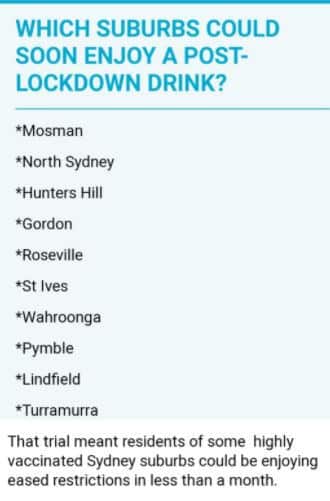Last year we had the North Melbourne towers lock-down. Unlike lock-downs in Sydney’s northern beaches, they were imposed on residents with no prior warning and immediate police enforcement.
This year, we saw the NSW state government drag its feet on looking down Sydney’s affluent eastern suburbs. Then, when the virus spread to the south-west, it imposed severe movement restrictions and an over-the-top police presence.
Now, an inner-western Sydney public housing block is facing similar treatment. The Common Grounds social housing centre in Camperdown has been locked down since 2 September under supervision of NSW Police. Four of its 130 residents had tested positive.
Residents are having care packages sent by family members searched by police to enforce an alcohol quota. The daily limit is reportedly six beers, or a bottle of wine, or a bottle of spirits, per day. One resident claims cigarettes are being confiscated, and that the searches are justified on the basis of checking for “drugs.”
It’s unclear whether there is any legal basis for the searches. On the face of it, it’s a case of brazen class prejudice that residents lack the legal and social clout to counter.
NSW Police has denied involvement in alcohol confiscation. According to News Corp reports, “A spokeswoman for the Sydney Local Health District said when NSW Health took control of apartment buildings for the purposes of limiting the spread of coronavirus, the buildings became subject to alcohol consumption restrictions.”

The biased treatment is salt in the wounds for communities already hit harder by the virus. Residents of poorer areas are less represented in skilled, work-from-home professions, and more represented in the essential, manual employment that everyone else depends on.
They’re also more often living in overcrowded housing. This gives them less means to social distance.
These factors add up to a much higher Covid toll. When adjusting for age, people in the poorest 20% of income-earners were 2.5 times more likely to die of Covid-19 than those in the richest 20%.
In Guildford in Sydney’s south-west, 5.7% of residents currently have Covid-19.
This Australian Institute of Health and Welfare research, moreover, is based on Australia’s Covid-19 toll in 2020. The disparity is likely to be more pronounced in the wake of the outbreak among south-western Sydney’s residents.
Then, to top it all off, many will blame them for it.
Follow Christian on Twitterformore news updates.